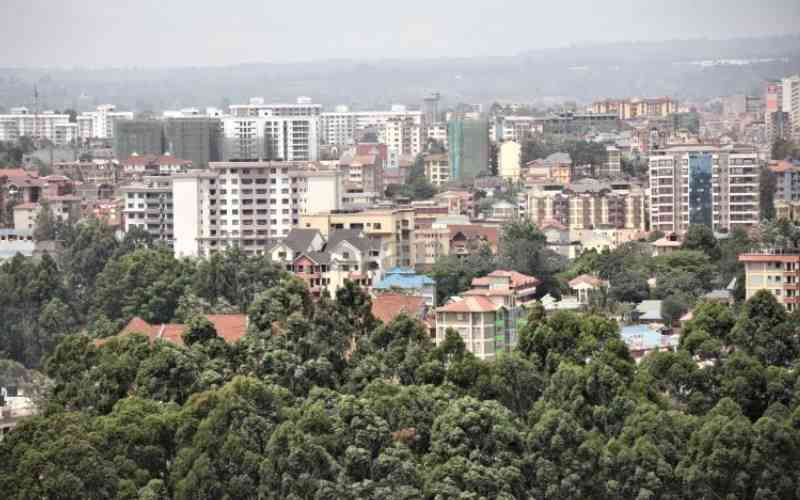Vision 2030 identifies energy as one of the infrastructure enablers that has the potential to increase productivity, alleviate poverty, accelerate employment creation and improve rural-urban balance.
In an effort to enhance energy supply, the government has focused on geothermal, solar and wind sources. Several initiatives have also been launched, including the Last Mile connectivity project that is geared towards increasing electricity connection to 70 per cent by 2017 through reduction of connection fees.
However, electricity shortages, disruptions and high costs still pose significant constraints.
Even though Kenya has an abundance of solar, this resource has largely been untapped. Germany leads in production of solar power with about 38 200MW, followed by China (28 528 MW) and Italy (18 460 MW).
In Africa, among the top solar producers is South Africa. So, what is holding Kenya from exploiting solar power? From the investor’s perspective, renewable energy is capital intensive and the first main obstacle is obtaining finance at affordable rates.
The un-attractive feed-in-tariffs for solar also discourage investors. Another challenge is the limited access to grid. It could also be because of the intermittency or irregularity of solar power and the fact that the grid cannot store excess power.
Inefficiency of solar panels, which can only power 35 percent of sunlight into energy, could also be another impediment. Producing solar power in Kenya could also be un-economical considering the amount of land required.
Producing 1 Gwh of solar power requires 7,500 metres squared of land per year compared to 1,200 and 3,200 for nuclear and coal power plants. For consumer’s, adoption of solar energy is hampered by insufficient access to financing, low awareness of the potential opportunities and economic benefits offered by solar technologies and the largely dispersed rural settlement that blocks sharing of mutual facilities.
The market for off-grid solar power energy has considerably grown in Kenya as a result of improved technology, wider choice and reduced prices in providing energy convenience and affordability to consumers with no connection or those seeking for a supplement to existing on-grid traditional systems.
This has also led to the competitiveness of not only locally manufactured solar components such as modules and batteries, charge controllers, inverters and Photovoltaic (PV) batteries but also of products of licensed supplier who are either importers, wholesalers or dealers with established suppliers.
The country is yet to explore on-grid solar options, not only as a sustainable alternative to boosting energy supply, but also as an avenue for linking consumers to the energy market. With the on grid-solar option, consumers are able to supply excess power generated from their systems to the main grid and earn credits from public utility companies (Kenya Power).
The consumers can then convert the earned credits to offset the cost of power drawn from the grid when there is low supply. This kind of scheme is known as the net-metering.
Another option net metering can apply is for the public utility company to pay the consumer for excess electricity supplied on agreed periodic basis which consumers could use to offset their bills.
The benefits of net metering include reliability of electricity supply, reduction in consumers budgets spent on electricity bills, reduction in the use of biomass, which has negative effects on the consumer’s health and promotion of small-scale investments by consumers.
The country is developing a net-metering policy, which will enhance solar adoption.
Even though net metering has been piloted in SoS Children’s Village in Mombasa and a Technical and Economic feasibility carried out by GIZ on behalf of German Federal Ministry of Economics and Technology, of importance is to understand that for this system to work in Kenya, several policy issues need to be clearly laid out.
Specifically, for economic viability, producer prices should be established to avoid exploitation or irregularities in credits offered.
Secondly, the compensation framework should allow for a monthly carryover of excess electricity at the utility’s full retail rate. This requires a change in billing and administration structures by the grid owner.
Thirdly, the draft Energy Bill of 2013 proposes an individual system limit of 20Kw, which limits the market potential and the inclusion of large customers such as the industries or commercial properties.
Lastly, the cost of solar PVs is still considered high for many consumers. Therefore, to tap on the gains of the net metering system, the price needs to be revised.
Also, a balance between maintaining profitability margins of the grid owner and encouraging absorption of the net-metering mechanism by consumers, with a view of stimulating income generating activities, needs to be carefully addressed in the development of the policy to ensure its sustainability and acceptance in the Kenyan energy market.
 The Standard Group Plc is a multi-media organization with investments in media
platforms spanning newspaper print operations, television, radio broadcasting,
digital and online services. The Standard Group is recognized as a leading
multi-media house in Kenya with a key influence in matters of national and
international interest.
The Standard Group Plc is a multi-media organization with investments in media
platforms spanning newspaper print operations, television, radio broadcasting,
digital and online services. The Standard Group is recognized as a leading
multi-media house in Kenya with a key influence in matters of national and
international interest.
 The Standard Group Plc is a multi-media organization with investments in media
platforms spanning newspaper print operations, television, radio broadcasting,
digital and online services. The Standard Group is recognized as a leading
multi-media house in Kenya with a key influence in matters of national and
international interest.
The Standard Group Plc is a multi-media organization with investments in media
platforms spanning newspaper print operations, television, radio broadcasting,
digital and online services. The Standard Group is recognized as a leading
multi-media house in Kenya with a key influence in matters of national and
international interest.









